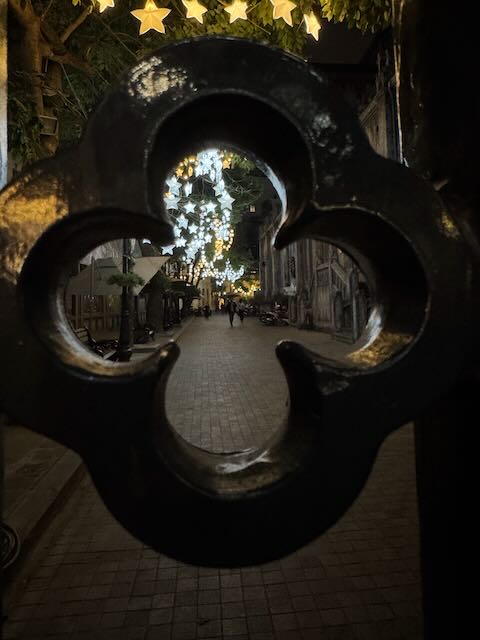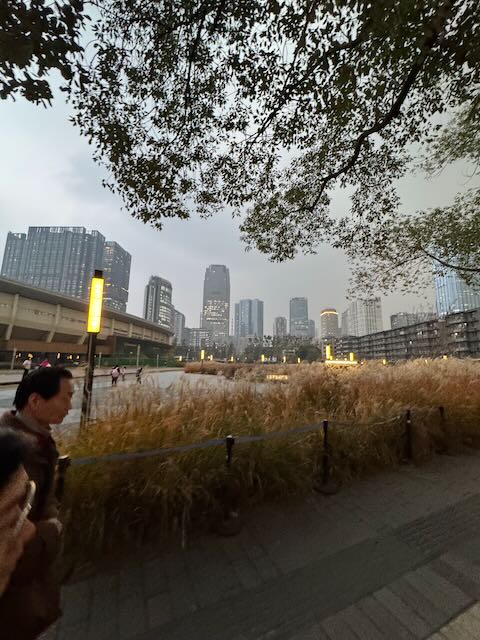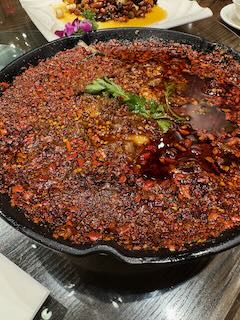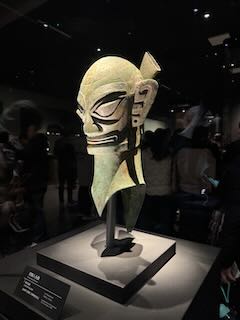Continuing on from Chengdu, we flew to Hanoi through Kunming Changshui International Airport (KMG) in Yunnan province. KMG is a regional "gateway" airport, connecting southwestern China to international destinations and provincial hubs. As such, the airport is distinctly mercantile and promotes the region's key agricultural outputs, including tea (which can be had readily and in massive variety) and produce. This is the first airport I've been in where I felt close to a farmer's market and could buy unprocessed fruit and vegetables in the terminal in quantity. There were far more than sad apples and bananas that one can find in US airports.
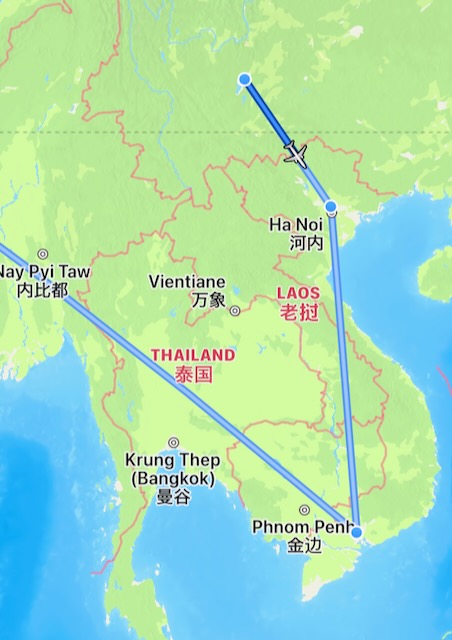
When preparing for the whole trip (which spanned latitudes from 10 (Ho Chi Minh City), 20 (Hanoi and Hong Kong), 30 (Chengdu), 40 (Istanbul & Boston)), I felt like I needed to pack for three seasons! Arriving in Hanoi, I enjoyed the more moderate weather… and soon encountered the famously poor quality air. Hanoi is a city built on motorbikes, more plentiful than you can imagine, and they are noisy and polluting. We stayed one night in Hanoi, doing a small load of laundry while there, before heading south to the first cultural site of our time in northern Vietnam.
Our brief time in Hanoi was our opportunity to connect up with another couple and begin traveling with them. Half of that couple grew up in Vietnam (Linh) and her parents live near Hanoi, so we had the best tour guides for our time in northern Vietnam. In the morning we visited Hoa Lư, in Ninh Binh province, which is the first unified capital of Đại Cồ Việt – an active national capital in the 10th and 11th centuries. Equally impressive is the temple Đền Thờ Vua Đinh Tiên Hoàng, in Trang An, part of a UNESCO World Heritage Site. The area is dominated by tower-karst limestone rock towers, carpeted by forest, and surrounding temples, scenic areas, and beautiful waterways. The temple honors the warlord-cum-emperor who routed the occupying Chinese forces in the mid-to-early 900s.
Our traveling companions were fantastically low key and we had plenty of time to just be in the spaces we visited, no pressure to move on to the next thing. But, when we got hungry, Linh and her mother would carefully plan where to go… and if we arrived a place that didn't seem quite right, Linh's mom would investigate, interview the proprietor, and determine whether the restaurant was acceptable. If the restaurant wasn't busy enough, it was unlikely it'd pass muster! This, along with very careful driving, was joyful and kept us all giggling. And, when we visited Tuyệt Tịnh Cốc, there were many cats that could be carefully photographed.
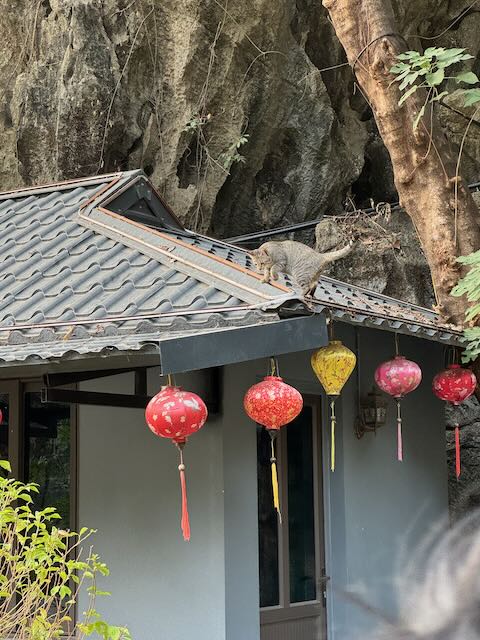
We spent about three days visiting sites around Ninh Binh, including the famous rivers sprawling through the karst formations that were the back drop to Kong Island and the bird sanctuary Thung Nham. We returned to Hanoi on the 24th, with Christmas around the corner.
Hanoi has a long history, complex and messy, and the museums we visited spanned thousands of years, military adventures (and mistakes), and more. The bunkers at Kinh Thien Palace were a stark reminder of prowess under duress and access to these formerly secret facilities continues to grow so the story can be told with more depth and punch. That was not meant to be a pun, but these bunkers are quite deep!
I would be remiss if I didn't list some of the excellent restaurants and coffee shops we visited while we were in Hanoi:
- Loading T – I put this on our list from a New York Times 36 hours article and it did not disappoint. Situated in a 1930s building, this photogenic spot stood out for its excellent egg coffee ( Cà phê trứng nóng ).
- Backstage – One of the more high end restaurants we visited. Loved the rolling pickled vegetable cart, the decoration, and the value.
- Phở Khôi Hói – Recalled as one of the best restaurants on our trip, we were consistently impressed with the flavor and excellence displayed in these small restaurants whose seating spilled out into the street.
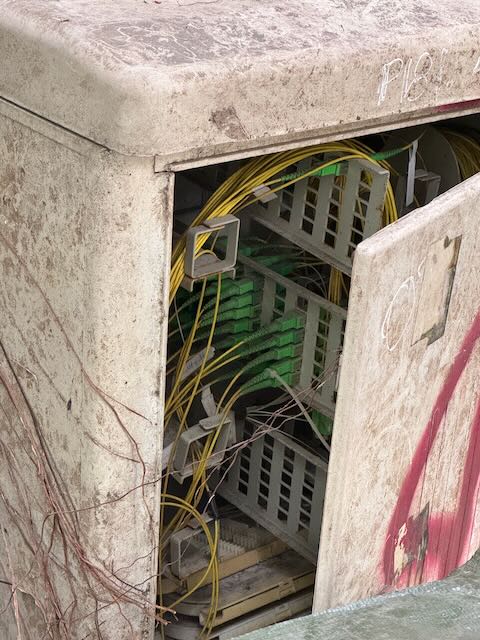
Hanoi provides many exemplars of wild telecom infrastructure. From sprawling bunches of fiber optic drop cables and enclosures to innerduct rising from cement up a pole, the city has an incredible variety of "get this connected NOW" vibes. And the workers, well, they're just getting it done!
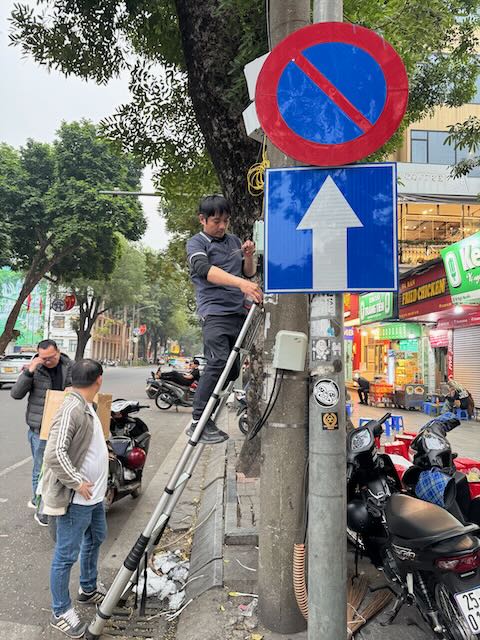
One of our last events before leaving Hanoi was a coffee tasting and "how-to" at Sử Quán Roastery. Vietnam is known for its innovative and Robusta-based coffee culture. Initially Arabica beans were introduced by the French in the 1800s, but Robusta grows better in the climate so Vietnam went all in on Robusta, rising to the second largest producer (as a country) with speed! The Phin, Vietnam's slow-drip brewer of choice, is iconic in its use and we, of course, bought one during the how-to. The how-to was in a group setting, with an encouragement to participate collaboratively on some of the recipes. We struck up conversation with Jenny, who was from the UK but traveling in southeast Asia, backpacking, for months by the time we met.
Here's where the title of this post comes in. We had light plans for our time in Ho Chi Minh City and Jenny had just come north from Saigon. As our conversation developed, she was moved to share her experience and make recommendations to us. She described a visit to War Remnants Museum as having a deep impact on her, with which she was still wrestling as she made her way to Hanoi. More will come, because her words definitely influenced us in our planning for Ho Chi Minh City and the experience had a long-tail impact on me.
